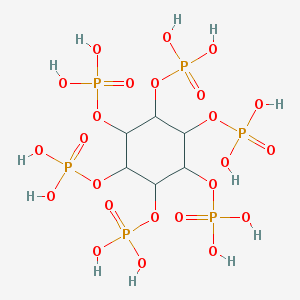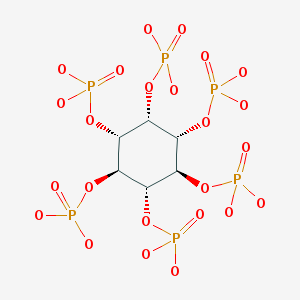
Absorb This . . . Phytic Acid
Inositol Hexaphosphate—a little goes a long way
You may have heard the term “Phytic acid” before if you have read any food blogs out there at all, or if you have asked someone why they go to the trouble of sprouting their grains before preparing them. Let’s explain what it is and its role in the grain first.
Have you heard the new food science that all the experts are just so sure of? We often demonize the next new term out there. Cholesterol = bad! Fats and Oils = bad! Salt=bad! Bad, bad, bad! Grrrrrr! And then we will pin wings onto other terms: Omega 3 fatty acids are overdose-worthy! Protein isgluttony-approved!
It is just not that simple. You have to learn about your family medical history and your own personal health first before you can know what you should eat or avoid eating. This data set will look different for every individual person. When foods are on the “bad list” we do not see the demand go down for that certain texture or taste, so we start seeing substitutes. Saturated fat went out of vogue and (for awhile) transfats were in. Sugar is worse than bad, how about aspartame instead—anyone?
Phytic acid is properly known as “inositol hexaphosphate” and “IP6” in the science world. Foods with Phytic acid generally owe their existence to it. The bad reputation it receives is largely because Phytic acid is the chemical within those foods that preserves that seed/nut until the time in which that seed or nut is brought back from its dormancy through the germination process.

Phytic acid grains (i.e. wheat, rice, barley, etc.) store their phosphorous (up to 50-80%) for future use within this chemical compound in the plant to slow the plant’s metabolism. Furthermore, Phytic acid is an antioxidant naturally occurring in the plant, and it can make up 1-5% of the grain, seed, nut, and even the pollen.
As you know, an antioxidant helps prevent cancers because they combat the damaging effect of oxidation within tissue. Foods high in Phytic acid, such as beans, may trend towards the same effect. There are numerous studies occurring at any given moment as to how Phytic acid might prevent (or even help cure) different forms of cancer; in fact, they have linked it definitively to preventing colon cancer. Since colon cancer runs in my family the consumption of Phytic acid (for me) is a positive thing—within reasonable limits.
We would not have the shelf life that we enjoy with such foods as beans, wheat, rice, etc. if it were not for the Phytic acid in food. However, after it has done its job and the food is on the table, what other effect does it have on you? And why the anti-phytic acid press if it is an antioxidant?
As it turns out, we will still get all the Phytic acid even with preparing our grains/seeds/legumes in a way that minimizes Phytic acid. A 2004 study (Onomi, Katayama) concluded that dietary intake of Phytic acid at a level of 0.035 percent may protect against a fatty liver, and that the anti-nutrient effect of Phytic acid on mineral absorption will only occur at 10 fold higher levels. The researchers even speculated that Phytic acid may be considered more like a vitamin than an anti-nutrient. We easily reach that level of acid if we are eating whole grains, beans and nuts. So we should not seek to eliminate it entirely, nor should we seek out Phytic acid as a supplement.
In that same study, mice overdosed on Phytic acid had severely reduced growth. The acid attaches itself to minerals (namely iron) but it within itself is not absorbable. The entire complex passes through; this means that you will not get the full nutrition out of the food product. The very fact that it suppresses iron is how it preserves the seed for future growth. If you have a high grain diet, take note this is why grain based baby food is fortified with iron.
In a conversation with Dr. Amanda Rose, I learned that you can soak your grains (or better yet sprout them first) to release the Phytates (or “Phytase”) which pull the Phytic acid from the food. Dr. Amanda Rose covers this science in more detail along with cooking tips through her website.
You need some Phytic acid in food, but you can easily get too much of a good thing. Consider soaking your grains and seeds to keep your diet in balance. Rinsing off rice and sprouting grains have been done for millenia now–nothing new there. But we do want to make sure that we are keeping a proper balanced diet. Phytic acid, a little goes a long way.
Chaya
Photo Credits:
Phytic acid checmical diagram is from the National Center for Biotechnology Information
http://pubchem.ncbi.nlm.nih.gov/summary/summary.cgi?sid=841469&loc=es_rss
Works Cited:
Onomi S, Okazaki Y and Katayama T. Effect of dietary level of phytic acid on hepatic and serum lipid status in rats fed a high-sucrose diet.. Biosci Biotechnol Biochem. 2004 Jun;68(6):1379-81
Proviso:
Nothing in this blog constitutes medical advice. You should consult your own physician before making any dietary changes. Statements in this blog may or may not be congruent with USDA or FDA guidance.

